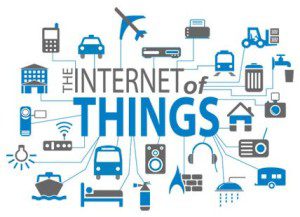“Connected devices enable organizations to work smarter, plan better, and foster more intelligent decision making processes.”
The Internet of Things (IoT) is a network of physical objects – “things” – that are embedded with electronic components, such as software or sensors, in order to provide greater connectivity between the device “thing” and affiliated systems, people, or services. The IoT allows for more efficient data collection and information exchange, and enables remote access across existing IT network infrastructure to create a faster and more interactive connection between the physica
l world and computer-based systems. Because of these advantages, the IoT is having a slow, but steady impact on global supply chains, supply chain management and logistics.

Supply Chain Management 2.0 (SCM 2.0)
Gartner, a major technology research firm, says that the IoT will result in a global logistics phenomenon. The research firm states that a 30-fold increase in Internet-connected physical devices by 2020 will “significantly alter how the supply chain operates.” That’s a predicted 26 billion devices. An article in Inbound Logistics refers to the oncoming revolution as “SCM 2.0.”
Greater In-Transit Visibility
One of the most important changes we are starting to see in supply chains and direct to consumer shipping is an increase in the in-transit visibility of goods. There are many nodes along the supply chain: manufacturer, supplier, distribution center, retailer, and the customer or end user. The more information that supply chain management professionals can gather and readily access throughout the chain the better they can lead their companies by pinpointing delivery dates, improving shipping automation, and more. This also minimizes calls from the consumer who can now log-in and see where their package is and adapt their delivery expectations.
That said, tracking technologies like GPS and Radio Frequency Identification (RFID) are paramount to the IoT. These technologies allow companies to track identity, location, temperature, traffic and weather conditions, driver-specific data like average speed, and more. With access to this information via the IoT, supply chain professionals can also:
- Detect potential product issues in time to implement solutions and avoid product loss,
- Monitor the temperatures of perishable food items to reduce waste,
- Improve warehouse management to reduce incidences of out-of-stock inventories,
- Improve fleet efficiencies by eliminating redundancies (such as deadhead miles) and optimize fleets to minimize fuel costs, and
- Gain valuable end-user insights about customer behavior and product usage.
The Economic Implications
Cisco conducted an economic analysis of the next 10 years and expects the Internet of Things to add approximately $8 trillion of value globally. Of this amount, Cisco found that $1.9 trillion will come from supply chains and logistics as a direct result of improved efficiencies. The remaining breakdown of the $8 trillion is as follows:
- $2.1 trillion from innovation and revenue,
- $2.1 trillion from asset utilization,
- $1.2 trillion from employee productivity improvements, and
- $700 billion from enhanced customer and citizen experience.
Security and Management Challenges
One of the impediments to realizing this value is the need for data security. With the billions or trillions of new data points that will be collected with the IoT, there will be an unprecedented increase in backdoor entrances into organizations where hackers can inject malware or extract data. Managers will have to consider their suppliers’ and carriers’ security vulnerabilities and assess risk tolerances and adapt security plans and protocols.

